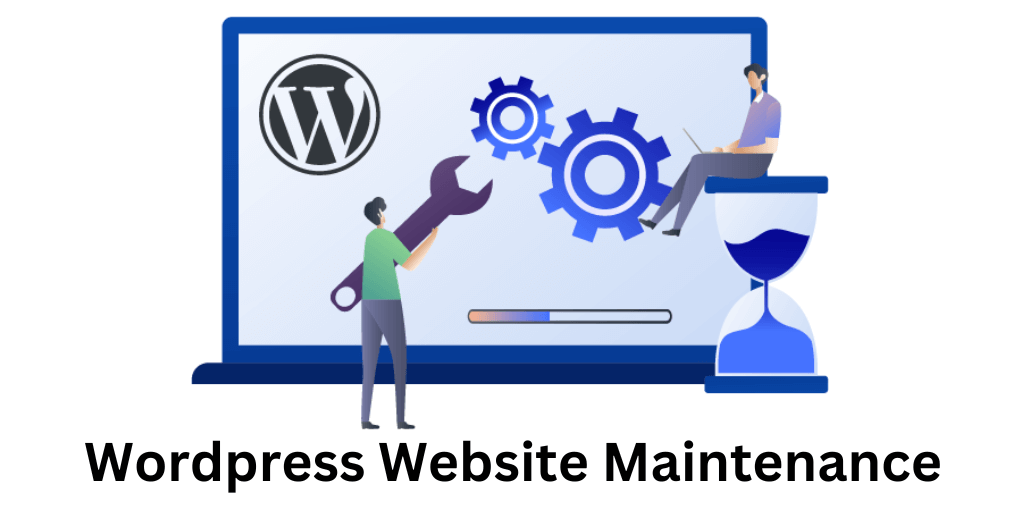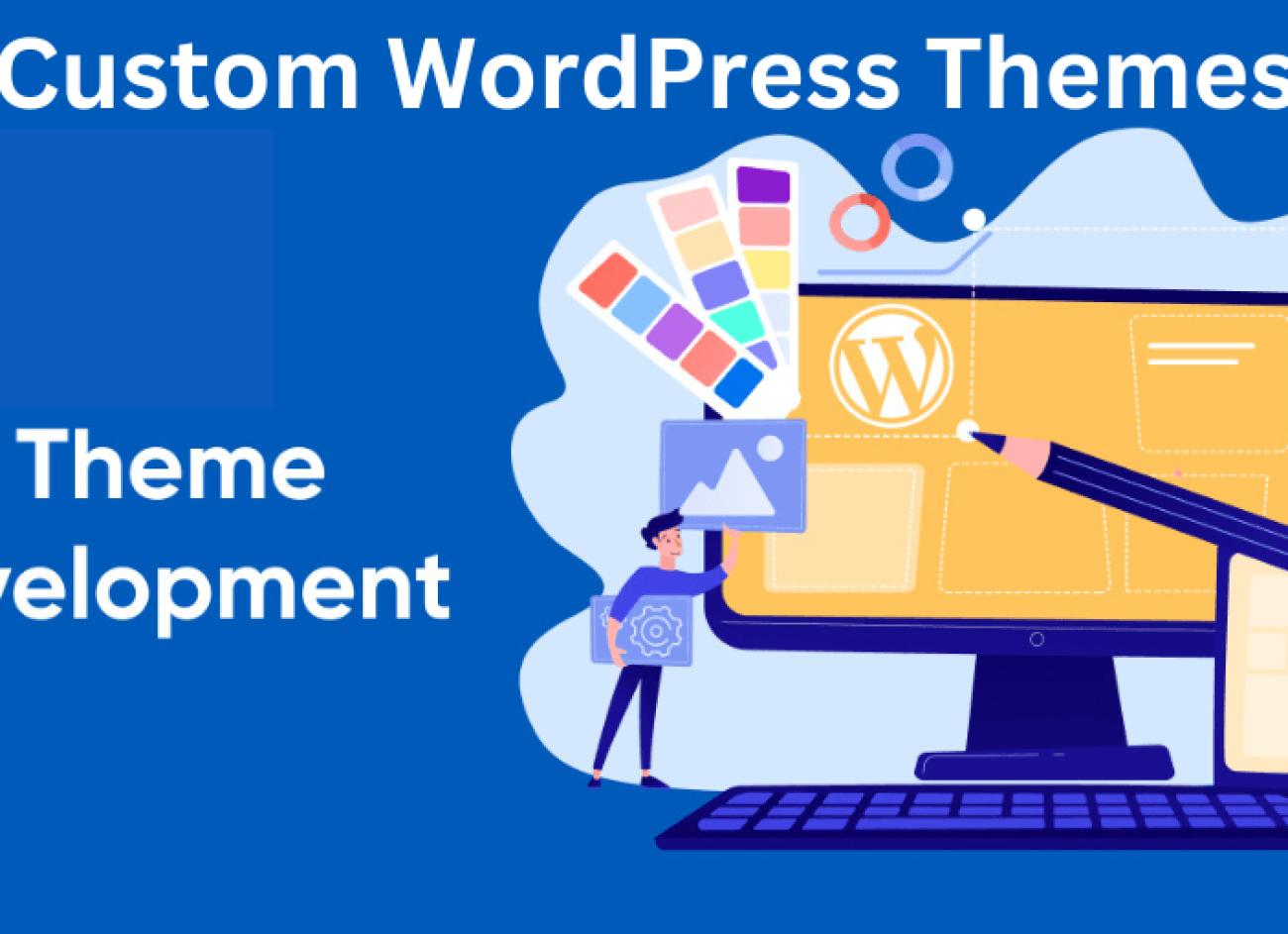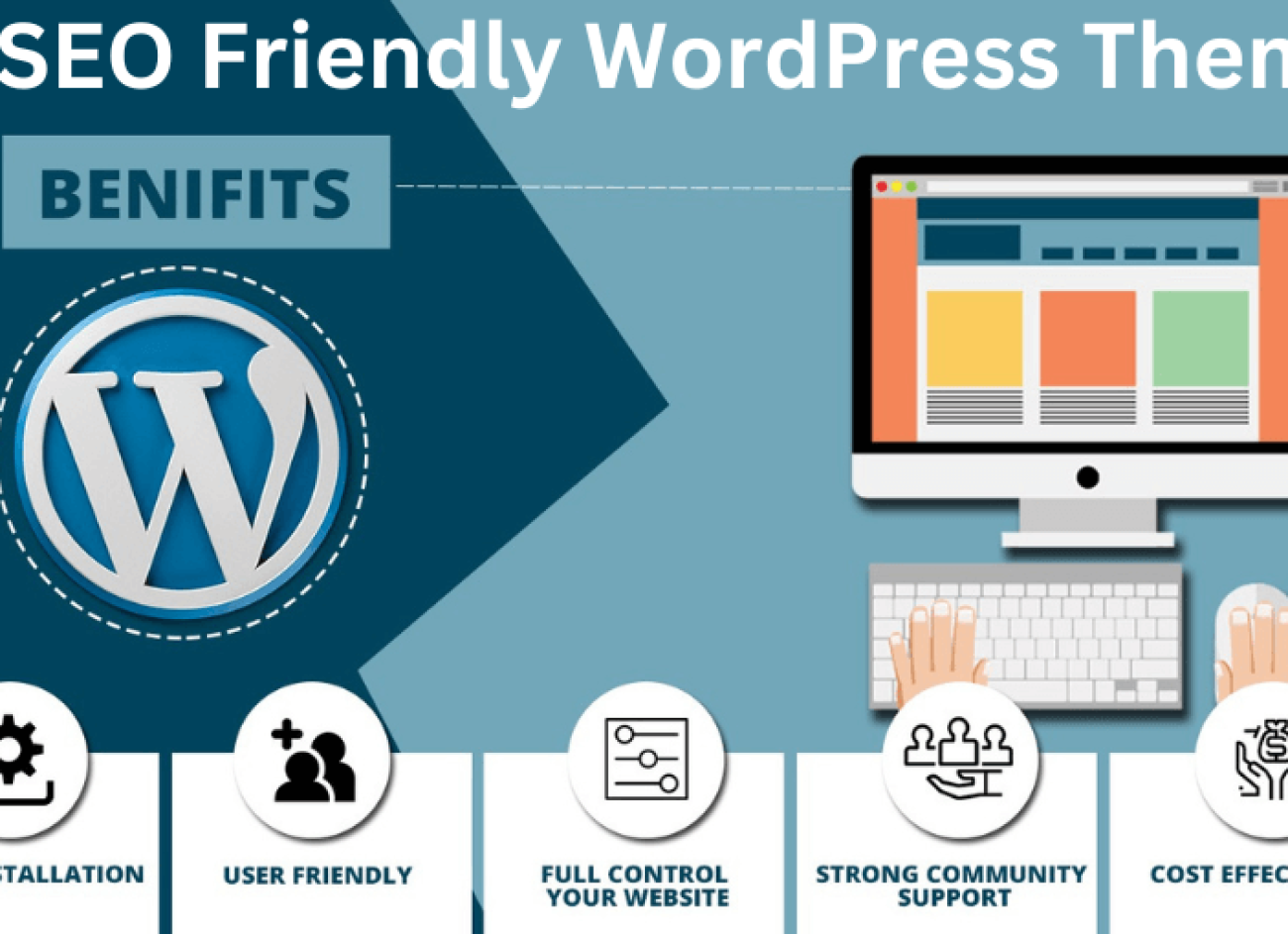Currently Empty: 0.00৳
Do you have any issue keeping your WordPress website up to date? Welcome to our blog post on WordPress website maintenance – the essential guide to keeping your website running smoothly!
In today’s digitally driven world, having a well-maintained website is crucial for businesses and individuals alike.
Among the plethora of website-building platforms available, WordPress stands out as one of the most versatile and popular choices.
Powering over 40% of all websites on the internet, WordPress offers an array of features and functionalities that make website management accessible even for those without technical expertise.
However, launching a WordPress website is only the first step in the journey towards online success.
To ensure optimum performance, security, and user experience, consistent maintenance is essential.
WordPress website maintenance involves regularly updating themes, plugins, and core software, monitoring site performance, backing up data, and implementing security measures to protect against potential threats.
In this blog post, we’ll explore the importance of WordPress website maintenance and provide you with simple tips to effectively maintain your site’s performance and security.
Why WordPress Website Maintenance Matters
WordPress website maintenance is crucial for several reasons. It matters for the following main reasons:
- Security: WordPress is a popular content management system (CMS), and unfortunately, it can be a target for hackers. Regular maintenance ensures that you have the latest security updates and patches. It minimizes the risk of security breaches and protecting your website and sensitive information.
- Performance: Over time, websites can become slower due to outdated plugins, themes, or content. Regular maintenance helps optimize your website’s performance, ensuring it loads quickly and functions smoothly for your visitors.
- Compatibility: WordPress frequently releases updates to improve functionality and address compatibility issues. Maintaining your website ensures that your plugins, themes, and core WordPress files are up to date and compatible with each other, reducing the risk of conflicts and errors.
- Backup and Recovery: Accidental data loss or website malfunctions can occur. Regular maintenance ensures that you have reliable backups of your website’s files and databases, enabling you to quickly restore your website if anything goes wrong.
- SEO Optimization: Search engine optimization (SEO) is critical for improving your website’s visibility and attracting organic traffic. Maintenance activities such as optimizing content, meta tags, and sitemaps can help enhance your website’s SEO performance and rankings.
Benefits of Regular Maintenance
Regular maintenance offers numerous benefits that contribute to the longevity and performance of various systems and equipment. Here are some key advantages:
Enhanced Efficiency
Regular maintenance ensures that equipment operates at its optimal level. By tuning and inspecting components regularly, the system’s efficiency is improved.
Improved Safety
Regular maintenance promotes a safe working environment. By inspecting and maintaining safety features such as fire alarms, sprinkler systems, and ventilation systems, potential hazards can be identified and resolved promptly.
Cost Savings
Proactive maintenance reduces the likelihood of costly breakdowns. By addressing minor issues during routine inspections, major repairs or replacements can often be avoided.
Additionally, well-maintained equipment tends to operate more efficiently, resulting in lower energy costs.
Consistent Performance
Regular maintenance ensures that equipment operates reliably and consistently.
This is particularly important for critical systems, such as manufacturing equipment or data centers, where downtime can result in significant losses.
By adhering to a maintenance schedule, businesses can minimize disruptions and maintain productivity.
Compliance with Regulations
Many industries have specific regulations and requirements governing the maintenance and operation of equipment.
Regular maintenance helps businesses meet these compliance standards, preventing legal issues or fines.
Improved Resale Value
Well-maintained assets tend to have higher resale value. Whether it’s a vehicle, machinery, or property, potential buyers are more likely to pay a premium for assets.
Essential WordPress Maintenance Tasks
Regular maintenance is essential for keeping a WordPress website running smoothly. Here are some key tasks to consider:
Update WordPress Core
Update your WordPress installation to the most recent version on a regular basis.
This ensures that you have access to new features, performance improvements, and most importantly, security patches.
Backup Your Website
Create regular backups of your WordPress site, including the database and all files. This ensures that you have a copy of your site in case of data loss, hacking, or other issues. Use plugins or manual methods to set up automatic backups.
Update Themes and Plugins
Keep your themes and plugins up to date. Developers release updates to fix bugs, improve functionality, and address security vulnerabilities. Update them regularly to ensure compatibility and a secure website.
Remove Unused Themes and Plugins
Remove any unused WordPress themes and plugins from your installation. This reduces the risk of security vulnerabilities and improves website performance.
Check for Broken Links
Use plugins or online tools to regularly scan your website for broken links. Broken links negatively impact user experience and can harm your SEO efforts. Fix or remove broken links as necessary.
Optimize Database
Optimize your WordPress database regularly to improve performance. Use plugins or manual methods to remove unnecessary data, optimize tables, and improve database efficiency.
Check Website Security
Implement security measures like strong passwords, two-factor authentication, and security plugins to protect your WordPress site. Regularly scan your website for malware, vulnerabilities, and potential threats.
Common Issues and Troubleshooting
When with WordPress, you may encounter some common issues. Here are a few of them along with troubleshooting tips:
- White Screen of Death: If you encounter a blank white screen on your WordPress site, it is often caused by a PHP error. To troubleshoot, enable debugging in WordPress by adding the following line to your wp-config.php file: define(‘WP_DEBUG’, true); This will display the error message, which can help identify the problem. Common causes include incompatible plugins or themes, memory limit issues, or syntax errors in your code.
- 500 Internal Server Error: This error can occur due to various factors such as faulty .htaccess file, PHP memory limit, incompatible plugins, or theme issues. Start by disabling all plugins and switching to the default theme. If the error disappears, reactivate plugins and theme one by one until the problem reappears. This will help identify the culprit.
- Plugin or Theme Compatibility Issues: Plugins and themes may not always operate well with WordPress or each other. If you have problems after adding a plugin or theme, try turning it off or using a different one to fix the issue. You can also visit the plugin or theme developer’s website or support forum to see if there are any compatibility issues or updates.”
- Connection Timed Out: If your website takes too long to load or you receive a connection timed out error, it could be due to server or hosting issues. Contact your hosting provider to inquire about any server-side problems. You can also try disabling any recently installed plugins or clearing your browser cache to rule out client-side issues.
- Permalink Issues: If you are experiencing issues with permalinks not working correctly, go to Settings > Permalinks in your WordPress dashboard and click “Save Changes” to refresh the permalink structure. This will often fix common issues with URLs not displaying as expected.
Best Practices for WordPress Website Maintenance
To ensure the smooth operation and security of your WordPress website, it’s important to follow best practices for website maintenance. Here are some key practices to consider:
- Regular Updates: Keep your WordPress core, themes, and plugins up to date. Updates often include bug fixes, security patches, and new features. Updating ensures that your website remains secure, stable, and compatible with the latest WordPress version.
- Backups: Create regular backups of your website and its database. Backups are crucial in case of data loss, hacking, or any unforeseen issues. Use reliable backup plugins or services to automate the backup process and store backups off-site for added security.
- Security Measures: Implement robust security measures to protect your website from potential threats. This includes using strong passwords, regularly changing them, and enabling two-factor authentication. Install security plugins to scan for vulnerabilities and monitor suspicious activities.
- Website Performance Optimization: Optimize your website for better performance and user experience. This involves optimizing images, implementing caching mechanisms, minifying CSS and JavaScript files, and using content delivery networks (CDNs) to reduce page load times.
- Database Cleaning: Regularly clean and optimize your WordPress database to improve website speed and reduce the risk of data corruption. Use plugins or manual methods to remove unnecessary data such as post revisions, spam comments, and expired transients.
- Broken Link Check: Regularly scan your website for broken links. Broken links not only frustrate users but can also harm your website’s SEO. Use plugins or online tools to identify and fix any broken links or redirects.
- Malware Scanning: Perform regular malware scans on your website to detect and remove any malicious code or files. Security plugins can help automate this process and provide alerts if any potential threats are found.
Documentation and Record-Keeping
Documentation and record-keeping play a crucial role in the management of a WordPress website. Here are some key points to consider:
User Guides and Tutorials
Create comprehensive user guides and tutorials that document how to perform various tasks on the website.
This can include step-by-step instructions, screenshots, and videos to help users navigate through different features and functionalities.
Standard Operating Procedures (SOPs)
Develop documented SOPs that outline the processes, workflows, and best practices for managing and maintaining the WordPress website.
This includes instructions on content creation, plugin updates, security measures, backup procedures, and more. SOPs ensure consistency and provide a reference for future maintenance.
Change Logs
Maintain a detailed change log that records all updates and modifications made to the website.
This includes plugin/theme updates, configuration changes, and any code modifications.
This log helps track changes, troubleshoot issues, and roll back changes if necessary.
Configuration Documentation
Record all the configuration settings of plugins, themes, and other website components.
This documentation should include details such as version numbers, settings, customizations, and any relevant integration information.
This helps in troubleshooting, migration, and replication of the website.
Support Tickets and Issue Tracking
Use a ticketing system or issue tracking software to log and track user support requests and reported issues.
This allows you to maintain a record of user interactions, track problem resolution progress, and identify recurring issues that require attention.
Backup Logs
Keep a record of all backup activities, including the date, time, and location of backups. This helps track the frequency and success of backups, ensuring that you have up-to-date copies of your website’s data.
Maintenance Schedules
Maintain a detailed schedule that outlines routine maintenance tasks and their frequency.
This includes tasks such as updating plugins and themes, performing backups, optimizing the database, and checking for broken links.
Adhering to a maintenance schedule ensures that regular tasks are not overlooked.
Internationalization and Multilingual Websites
Internationalization
Internationalization refers to the process of designing and developing websites and applications in a manner that makes them accessible and usable across different languages, cultures, and countries.
The goal of internationalization is to eliminate barriers that prevent users from different regions and linguistic backgrounds from accessing and understanding the content.
Multilingual websites
On the other hand, are websites that support multiple languages. These websites are designed to display content in different languages based on a user’s preferences or location.
Multilingual websites typically provide language selection options to allow users to switch between different language versions of the website.
There are several factors to consider when internationalizing and creating multilingual websites:
- Content Localization: Translating and adapting the content of the website to the target language and culture is essential. This includes translating text and multimedia content, such as images and videos, as well as considering cultural nuances and preferences.
- Language Selection: Providing a user-friendly language selection interface that allows users to switch between different language versions of the website is crucial. This can be done through language drop-down menus or flags representing different countries.
- URL Structure: Designing a URL structure that includes language indicators can help search engines and users understand the language of a particular page. For example, using domain.com/en/ for English pages and domain.com/fr/ for French pages.
- User Interface: Designing a user-friendly interface that accommodates different languages and text directions (e.g., left-to-right or right-to-left languages) is important. This includes taking into account variables such as text expansion or contraction, font choices, and input methods.
- Date and Time Formats: Adapting and displaying dates, times, and numeric formats according to the user’s locale and preferences is necessary. This involves considering different date formats, time zones, and currency symbols.
- Search Engine Optimization (SEO): Optimizing the website for search engines in multiple languages requires implementing proper hreflang tags, submitting localized sitemaps, and ensuring each language version has unique and relevant content.
- Local Regulations: Complying with local regulations and requirements, such as privacy laws or accessibility guidelines, is essential when targeting different countries.
Future-Proofing Your Website
In today’s rapidly evolving digital landscape, future-proofing your website is crucial to ensuring its longevity and effectiveness. Here are some key considerations and strategies to help you future-proof your website:
Mobile optimization
With the increasing use of smartphones and tablets, having a mobile-responsive website is no longer optional.
Ensure that your website is fully optimized for mobile devices, providing users with a seamless browsing experience regardless of the screen size.
Design flexibility
A flexible design allows your website to adapt to new trends, technologies, and user expectations.
Consider using a modular design approach that easily accommodates changes and updates without requiring a complete overhaul.
Scalability
Your website should be built with scalability in mind, allowing for easy expansion and integration of new features and functionalities.
This ensures that your website can grow alongside your business needs and evolving customer demands.
Content management system (CMS) choice
Selecting a robust and flexible CMS is crucial for future-proofing your website.
Look for a CMS that offers regular updates, security patches, and a range of plugins and integrations to meet your evolving needs.
Integration with emerging technologies
Keep an eye on emerging technologies like artificial intelligence, machine learning, voice search, and augmented reality.
Explore how these technologies can be integrated into your website to enhance user experience and stay ahead of the curve.
Conclusion
WordPress website maintenance is not something to be overlooked or taken lightly. It plays a crucial role in ensuring the security, performance, compatibility, and overall success of your website.
Regularly taking care of your WordPress website is important. It helps keep it safe from hackers, makes it work faster, and solves problems with different things working together. You can also save your information and do better on search engines.
A well-kept website makes people happy and more likely to do what you want them to do on your site.
So, it’s a good idea to spend time and energy maintaining your WordPress site. It will help your online presence do really well.
FAQs
Here are a few frequently asked questions about WordPress website maintenance:
How often should I perform WordPress website maintenance?
It is recommended to perform regular maintenance tasks, such as updates and backups, at least once a month.
However, the frequency may vary depending on your website’s complexity, size, and activity level. High-traffic or e-commerce websites may require more frequent maintenance.
What tasks should be included in WordPress website maintenance?
WordPress maintenance tasks usually include updating plugins, themes, and the WordPress core to the latest versions, performing regular backups, monitoring website security, optimizing performance, checking for broken links, and reviewing analytics.
Can I perform WordPress maintenance myself, or should I hire a professional?
Depending on your technical skills and time availability, you can perform basic maintenance tasks yourself.
However, hiring a professional WordPress maintenance service can ensure comprehensive and consistent upkeep of your website, especially if you have complex requirements or limited expertise.
What are the risks of not performing WordPress maintenance?
Neglecting WordPress maintenance can lead to security vulnerabilities, slower website performance, compatibility issues, data loss, and a poor user experience.
It can also harm your search engine rankings and make your website more susceptible to hacking and malware attacks.




